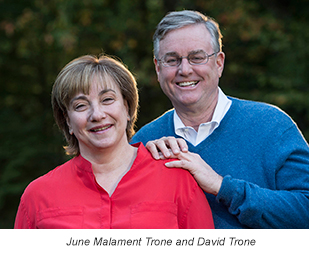Penn Research Team: $5 Million CURE Grant to Use Big Data to Improve Health
A team of physicians and researchers across Penn Medicine and the University of Pennsylvania have been awarded a four-year $5 million grant to develop and test algorithms aimed at predicting adverse health events in real time. The project, Smarter Big Data for a Healthy Pennsylvania: Changing the Paradigm of Healthcare, is funded by the Commonwealth Universal Research Enhancement (CURE) program and will examine the use of the algorithms in the hospital, at home and in the community.
The researchers will develop strategies to pull and blend information from diverse sources—from insurance claims and electronic health records to social media and patient surveys—in an effort to refocus the health care delivery system to a more proactive approach that anticipates clinical events before they happen, allowing for the potential to avoid dangerous and costly health events such as heart attacks and chronic disease flare-ups.
“Our overall goal is to make new data assets smart and actionable, combining mathematical, statistical and health economics perspectives to change the way health care is delivered,” said Daniel Polsky, professor of medicine at the Perelman School of Medicine at the University of Pennsylvania, executive director of the Leonard Davis Institute (LDI) and one of the project leads. Dr. Polsky pointed to the unusual combination of institutions, expertise, practitioners, data and hardware brought together in one project as a major key to the success of the initiative.
Penn Medicine will provide the big-data engine through its Penn Signals platform, which has already successfully produced real-time heart failure detection and sepsis predictive algorithms during its piloting phase, and will allow for the scaled processing of millions of patient records.
“Having the support of the health system leadership, and working closely with Penn’s Chief Data Scientist Michael Draugelis, has been critical to building a big data research agenda,” said co-lead Kevin Volpp, professor of medicine and medical ethics & health policy at the Perelman School, professor of health care management at Wharton and director of Penn’s Center for Health Incentives & Behavioral Economics. “This project is a robust collaboration between the data science team at Penn Medicine and our academic team of physicians and social scientists, and has the potential to benefit Pennsylvania’s most vulnerable populations by addressing health disparities and moving our health care system beyond the walls of the hospital and into homes and communities where the most vulnerable face the greatest challenges.”
The project will deploy three separate research teams to explore predictive algorithms:
• The in-hospital team is led by Amol Navathe, assistant professor of medical ethics & health policy, whose research focuses on the use of advanced health data analytics and technology to improve health care. Dr. Navathe will work closely with the Penn Signals team to develop prediction models of patients at risk for in-hospital complications of common surgical care, including gallbladder surgery, colorectal surgery and total joint replacements.
• The at-home team, led by Mitesh Patel, assistant professor of medicine and health care management, will work to develop models to dynamically predict changes in out-of-hospital risk for 30-day readmission by monitoring medication adherence and physical activity in the home and through the integration of these home data sources with the data from insurance claims and the electronic health record.
• To monitor community health, the third team, led by Raina Merchant, assistant professor of emergency medicine and director of Penn’s Social Media & Health Innovation Lab, will integrate social media data with statewide data to build and validate a tool to monitor and predict high-morbidity health conditions (heart disease, cancer, chronic lung disease, stroke and unintentional injury) at a community level. This team will also build computational models to use Twitter data for monitoring and predicting dynamic public health events in the state (e.g., influenza, food-borne illness, infectious outbreaks and acute environmental exposures).
The project also includes a training component to improve the pipeline of minorities entering science and public health careers who are equipped to use Big Data. It will provide opportunities for training in Big Data research through LDI’s Summer Undergraduate Minority Research (SUMR) program, now in its 17th year. Undergraduate scholars from Lincoln University, one of Pennsylvania’s historically black universities, will participate in this 12-week summer internship.
In addition to collaborators across Penn Medicine and the University of Pennsylvania, the team will also include researchers at both Temple University and Carnegie Mellon.
Penn Wharton Public Policy Initiative: $5 Million Gift from David Trone and June Malament Trone
 The Penn Wharton Public Policy Initiative (Penn Wharton PPI) is pleased to announce a $5 million commitment from David J. Trone, WG’85, and June Malament Trone, WG’85, which will fuel the growth of the Initiative at the Wharton School of the University of Pennsylvania. Mr. and Mrs. Trone’s gift will establish the Trone Family Public Policy Initiative Fund, providing funding for research and other critical support promoting clear, fact-driven, accessible knowledge to stimulate policies that benefit the American public. The Penn Wharton PPI is a hub for public policy research and education with one overarching goal across its Philadelphia and Washington, DC, offices: to leverage the University’s resources to foster better-informed policymaking on issues related to business and the economy.
The Penn Wharton Public Policy Initiative (Penn Wharton PPI) is pleased to announce a $5 million commitment from David J. Trone, WG’85, and June Malament Trone, WG’85, which will fuel the growth of the Initiative at the Wharton School of the University of Pennsylvania. Mr. and Mrs. Trone’s gift will establish the Trone Family Public Policy Initiative Fund, providing funding for research and other critical support promoting clear, fact-driven, accessible knowledge to stimulate policies that benefit the American public. The Penn Wharton PPI is a hub for public policy research and education with one overarching goal across its Philadelphia and Washington, DC, offices: to leverage the University’s resources to foster better-informed policymaking on issues related to business and the economy.
“David and June’s generosity adds fantastic momentum to the Penn Wharton PPI,” said Wharton Dean Geoff Garrett. “I am sincerely grateful for their philanthropy and for their partnership in this rapidly expanding and exciting initiative. Their support will benefit Wharton, Penn and the policymaking landscape across the US while growing the community of visionary donors to PPI.”
Mr. and Mrs. Trone’s gift builds upon the support of other leadership contributors to the Penn Wharton PPI, including Marc Rowan, W’84, WG’85, and Marc Spilker, W’86 (Almanac September 18, 2012). Mr. Rowan and Mr. Spilker provided foundational funding for the Initiative, as well as resources dedicated to PPI’s first signature product—a new federal budget model that will offer policymakers a compelling alternative to the Congressional Budget Office for considering the budgetary impact of proposed legislation. Among its many other operations and offerings, PPI provides summer internship programming for students to pursue life-changing opportunities in DC; a new honors certificate program for students interested in domestic public policy and the economy; and lectures featuring senators, members of Congress and other policy leaders. The Penn Wharton PPI embodies the Wharton School’s emphasis on the important applications of rigorous data and analytics in today’s dynamic environment and fostering connections between the public and private sectors.
“Our family put careful thought and consideration into finding an opportunity to make a strong impact at Wharton by supporting an area of great interest to us—we’re delighted to have found this in the Penn Wharton PPI,” said Mr. Trone. “It’s our pleasure to be able to work with the PPI, and we look forward to seeing the positive impact of the PPI on both the University’s students and on advancing fact-driven policymaking in Washington, DC.”
Mr. Trone earned his bachelor’s degree magna cum laude and Phi Beta Kappa from Furman University and his MBA from the Wharton School. He is the co-owner and president of Total Wine & More, America’s largest independent retailer of fine wine, which employs more than 5,000 individuals and operates over 150 superstores in 21 states. Mrs. Trone earned a degree in engineering magna cum laude from Stony Brook University, where she was inducted into Tau Beta Pi, the national honor society for engineers. Following her graduation, Mrs. Trone worked at Scott Paper Company for five years as both a process engineer and an industrial engineer. She also earned her MBA from Wharton.
Ramon Diaz-Arrastia: Presidential Professor
 Penn President Amy Gutmann and Provost Vincent Price are pleased to announce the appointment of Ramon Diaz-Arrastia as the ninth Presidential Professor, effective July 1. A world-leading expert in traumatic brain injury, Dr. Diaz-Arrastia will be the Presidential Professor of Neurology in the Perelman School of Medicine.
Penn President Amy Gutmann and Provost Vincent Price are pleased to announce the appointment of Ramon Diaz-Arrastia as the ninth Presidential Professor, effective July 1. A world-leading expert in traumatic brain injury, Dr. Diaz-Arrastia will be the Presidential Professor of Neurology in the Perelman School of Medicine.
“At the uncharted frontier of brain science and traumatic injury, few investigators have expanded our knowledge quite like Dr. Ramon Diaz-Arrastia,” said President Gutmann. “Ramon is a pioneering force in exploring the intricacies of neural damage and repair, and as Presidential Professor he will further strengthen Penn’s vital neurological research and exceptional clinical care.”
Dr. Diaz-Arrastia is currently professor of neurology at the Uniformed Services University of the Health Sciences (USUHS) in Bethesda, Maryland. He also serves as director of Clinical Research at the Center for Neuroscience and Regenerative Medicine, a partnership between the USUHS and the National Institutes of Health to promote research about traumatic brain injuries. His path-breaking research focuses on understanding the molecular, cellular and tissue level mechanisms of secondary neuronal injury and neuroregeneration, especially through biomarker development. His most recent work explores using MRI, functional MRI and PET scanning in order to characterize the multiple complex mechanisms involved in traumatic injury to the brain, as well as combining imaging, genomic and tissue biomarkers to better predict patient outcomes after traumatic brain injuries and develop novel therapies.
The author of more than 135 peer-reviewed primary research papers and more than 30 invited reviews and book chapters, he has led major research projects funded by the National Institutes of Health and the Department of Defense, among others, and served on expert panels convened by the Institute of Medicine, National Institute of Neurological Disorders and Stroke, National Institute of Aging and the Department of Defense. He taught from 1993 to 2011 at the University of Texas Southwestern Medical Center, where he created one of the largest and most productive clinical centers in the world devoted to traumatic brain injuries. A native of Cuba, he has frequently participated in community outreach and media presentations to the Spanish-speaking community on topics such as epilepsy, Alzheimer’s disease and traumatic brain injury.
“Ramon Diaz-Arrastia embodies the deepest values of teaching and learning at Penn,” said Provost Price. “His innovative research makes a tangible impact on the lives of patients around the world. At the same time, he is an award-winning teacher, a valued collaborator and a dedicated mentor of students and colleagues.”
Dr. Diaz-Arrastia earned an MD (1988) and PhD in biochemistry (1986) from Baylor College of Medicine and a BA magna cum laude in biochemistry (1979) from Rice University. From 1989-1992, he was a resident in neurology at Columbia-Presbyterian Medical Center, following a one-year internship in internal medicine at Beth Israel Hospital/Harvard Medical School.
“Dr. Diaz-Arrastia will be an outstanding addition to our already robust research and teaching faculty in the neurosciences who are helping to advance our understanding of the brain biology and physiology that contributes to traumatic brain injury,” said J. Larry Jameson, executive vice president of the University of Pennsylvania for the Health System and dean of the Perelman School of Medicine. “He arrives at Penn at a crucial time in the trajectory of our efforts to understand and develop effective treatments for this disease.”
Presidential Professorships, originating in the Action Plan for Faculty Diversity and Excellence first issued in 2011 (Almanac September 6, 2011)are awarded to exceptional scholars, at any rank, who contribute to faculty eminence through diversity across the University.
Ad Hoc Advisory Committee on Divestment
From the Vice President and University Secretary
Ad Hoc Advisory Committee on Divestment
University policy provides for the establishment of an Ad Hoc Advisory Committee on Divestment when a proposal to divest from the Penn endowment has been received by the Steering Committee of University Council, and found to be sufficiently substantive for further review.
As such, an Ad Hoc Advisory Committee has been convened to consider a divestment proposal submitted by Fossil Free Penn in October 2015 according to the standards of the Guidelines and Procedures for Consideration by the Trustees of Proposals for Divestment from the University Endowment or Other Holdings Based Upon Social Responsibility Concerns of the Penn Community.
The Committee’s report will be made in writing to the Trustees, who have sole responsibility for making investment decisions for the University.
On behalf of David L. Cohen, Chair of the Board of Trustees, I am pleased to announce his appointees for membership to the Ad Hoc Advisory Committee.
—Leslie Laird Kruhly, Vice President and University Secretary
Membership of the Ad Hoc Advisory Committee on Divestment
Chair and Alumni Representative
David Roberts, W’84, Chair, GSE Overseer Board; senior managing director, Angelo, Gordon
Faculty
Bruce Giantonio, associate professor of medicine, PSOM
Irina Marinov, assistant professor, earth & environmental science, SAS
Mark Alan Hughes, professor of practice, PennDesign and faculty director of the
Kleinman Center for Energy Policy
Jennifer Lukes, professor of mechanical
engineering & applied mechanics, SEAS
Students
Karen Chen, W’17
Dillon Weber, ENG’16
Stephen Goldstein, BMG, PhD’18
Mary Whitehouse, LPS’16
Alumni
Helen Pudlin, Esq., CW’70, GED’71, L’74, member, Penn Law Overseer Board; former executive vice president and general counsel, PNC Financial Services Group
Staff
Sharon Brokenbough, director, finance & administration, Division of Public Safety
Tom Hecker, associate dean and chief of staff, PSOM
Jeff Rowland, associate director of staff and labor relations, Division of Human Resources
Marilyn Jost, executive director, administration & finance, Facilities & Real Estate Services
At Large
Sharon Aylor, CW’75, executive director of staff and labor relations, Division of Human Resources
Sara Senior, CW’52, former president of General Alumni Society; former chair, Penn Museum Overseer Board
The Office of the University Secretary will provide administrative support to the Ad Hoc Committee. If you have any questions, please email adhoccom@exchange.upenn.edu
Final Report of the Consultative Committee for the Selection of a Dean of the School of Design
The Consultative Committee for the Selection of a Dean of the School of Design was convened by Penn President Amy Gutmann and Provost Vincent Price on September 17, 2015. During its three months of work, the full Committee met on 10 occasions and reported its recommendations to the President and the Provost on December 17, 2015.
The Committee members were:
Chair
Michael Delli Carpini, Walter H. Annenberg Dean and professor of communication (ASC)
Faculty
Eugenie L. Birch, Lawrence C. Nussdorf Professor of Urban Research and Education
William W. Braham, professor of
architecture
Jeffrey Kallberg, William R. Kenan, Jr.
professor of music history and associate dean for arts & letters (SAS)
Ken Lum, professor and director of fine arts undergraduate program
Randall F. Mason, associate professor in city & regional planning and chair of historic preservation
Karen M’Closkey, associate professor of landscape architecture
Gwendolyn DuBois Shaw, associate
professor of history of art (SAS)
Students
Douglas Breuer (MArch’17)
William Fleming (city planning PhD)
Ex Officio
Joann Mitchell, vice president for
institutional affairs
Alumni
Barbara van Beuren (MArch’88)
Kevin Penn (School of Design Overseers chair)
Staff
Adam P. Michaels, deputy chief of staff,
Office of the President
Consultants
Sheryl Ash, Isaacson, Miller
Benjamin Tobin, Isaacson, Miller
Courtney Tunis, Isaacson, Miller
The Committee was greatly aided in its efforts by Sheryl Ash, Benjamin Tobin and Courtney Tunis of the Isaacson, Miller search firm. The Committee and the consultants each conducted extensive outreach, informational interviews and meetings with individuals and groups throughout the PennDesign community and at other institutions, along with many informal contacts. The consultative activities included full Committee meetings with Dean Marilyn Taylor, the School’s associate deans, senior leadership and department chairs; meetings of the Consultative Committee chair with the School’s Board of Overseers, faculty, staff and students; and extensive networking by members of the Committee with the School’s faculty and students, as well as with colleagues at other institutions. The Committee also solicited advice and nominations from all faculty, staff, students and alumni of the School via email and reviewed a variety of documents about the School. The members of the Committee were especially energetic in soliciting and recommending the names of potential candidates.
Based upon these conversations and materials, the Committee’s initial meeting with the President and the Provost, and the Committee’s own discussions, a comprehensive document was prepared outlining the scope of the position and the challenges a new Dean will face, as well as the qualities sought in a new Dean. The Committee utilized this document in its discussions and deliberations and also shared it with candidates for the Dean position.
The Committee and the consultants contacted 143 individuals to assess their interest in participating in the search and/or for nominations. The Committee interviewed a group of 10 semi-finalists that included two women, two African Americans and one Asian. The six individuals recommended for consideration to the President and the Provost included one African American, one Asian and one woman and were selected from this group of 10 semi-finalists.
On February 25, 2016, President Gutmann announced the selection of Frederick “Fritz” Steiner, GRP’77, G’86, Gr’86, dean of the School of Architecture and Henry M. Rockwell Chair in Architecture at the University of Texas at Austin, who will assume the deanship on July 1, 2016. Dr. Steiner is an acclaimed scholar and teacher and a proven leader who has a longstanding commitment to and appreciation for interdisciplinary scholarship, teaching and practice in the design professions and the fine arts.
—Michael X. Delli Carpini, Walter H. Annenberg Dean and Professor of Communication, Annenberg School for Communication
Monica E. Monroe: Penn Law Dean of Students
 Continuing a longstanding ethic of fostering a student-centric, collegial and collaborative law school community, the University of Pennsylvania Law School (Penn Law) has appointed Monica E. Monroe as the new Dean of Students.
Continuing a longstanding ethic of fostering a student-centric, collegial and collaborative law school community, the University of Pennsylvania Law School (Penn Law) has appointed Monica E. Monroe as the new Dean of Students.
Ms. Monroe came to Penn Law last month from the George Washington University Law School (GW Law), where she served as associate dean of students and a lecturer in law. In this position, she directed student affairs and academic programming while advising the dean and senior staff on student-related matters in and out of the classroom. In addition to her work in student affairs, she also taught legal research and writing.
“We are exceptionally happy to welcome Monica Monroe to Penn Law,” said Ted Ruger, dean of Penn Law. “We know that she will bring commitment and drive to working with and supporting students as part of their educational experience here, and that she will become a vital part of the intellectual and social fabric of the Law School for years to come.”
Ms. Monroe earned her BA from Boston University and her JD from GW Law. She clerked for the US Court of Appeals for the Armed Forces and the Superior Court of the District of Columbia.
After completing her clerkships, she spent six years in private practice in Washington, DC, where she focused on real estate, housing, employment and commercial law. She began teaching in the legal research and writing program at GW Law in 2004 and served as assistant dean of student affairs before her promotion to associate dean.
In addition, she is a former member on the Executive Committee of the George Washington University Law School Alumni Board of Directors, past president of GW’s Black Law Alumni Association and a founding member of the Young Professional’s Group of Covenant House Washington.
“It is an honor to join the community at Penn Law,” said Ms. Monroe.“I have had the opportunity to experience first-hand the Law School’s collegial and supportive environment. I embrace the role the Dean of Students has in modeling that ethic for our students. I look forward to working with Dean Ruger, faculty, administrators, students and alumni in an effort to ensure students engage deeply in their experience at Penn Law.”
Ms. Monroe assumed the role of Dean of Students upon the retirement of Penn Law’s longtime Dean of Students, Gary Clinton, who joined Penn Law as a library assistant in 1976 and had led the School’s student affairs office since 1992.
“I am delighted that Monica Monroe will be succeeding me as Penn Law’s Dean of Students,” said Mr. Clinton. “Monica has a wealth of experience in student affairs, a demonstrated commitment to supporting students and the sense of balance between responsiveness and responsibility that is a hallmark of Penn Law. Each meeting with her has left me with an increased certainty that Monica is the right person for this job and this place.”
Excellence through Diversity Fund: Call for Proposals: April 25
The University is pleased to call for proposals for the Excellence through Diversity Fund. The Fund, announced in the Penn Action Plan for Faculty Diversity and Excellence (Almanac September 6, 2011), will provide resources for interdisciplinary projects of University faculty on topics relating to equity, inclusion and diversity, with the goal of strengthening the Penn curriculum in these areas and recognizing excellence in these important fields of inquiry. Funds will be awarded to the Schools competitively, on a matching basis, to provide needed term resources to launch new efforts or strengthen existing ones, beginning July 1, 2016. Proposals should include a description of efforts to obtain funding from other sources. The Fund may support:
• Implementation of the Schools’ strategic plans to diversify faculty and student populations;
• Research on equity, inclusion and diversity in higher education;
• Projects that foster and support diversity on the campus;
• Faculty work on projects aimed at advancing the ideals of the Penn Compact as they relate to increased access of students and faculty.
A list of projects funded last year can be found at: http://www.upenn.edu/almanac/volumes/v62/n02/penn-excellence-through-diversity-projects.html
Criteria for Review
Review and evaluation will be based on the following criteria:
• Relationship to the aims of the Fund as described above;
• For projects aimed at diversifying the campus environment, clarity of goals and procedures and presence of an evaluation plan;
• Potential for sustainability and/or impact over time with school, center or extramural funding, particularly as demonstrated by matching funds;
• Likelihood of generating new insights about diversity in higher education;
• Presence of a realistic and sufficiently detailed budget;
• Potential for sustainable partnerships among schools, departments or university programs.
Proposals are due by April 25, 2016.
Review Process
The Fund will be administered by the Office of the Vice Provost for Faculty. Proposals will be reviewed for scholarly merit and significance for diversity research, teaching and service. Priority will be given to innovative designs and to plans that involve multiple Schools.
Application
Applications must include:
• A completed ETDF Budget Form, available with PennKey at
https://upenn.app.box.com/files/0/f/0/1/f_27011277491
• A completed ETDF Cover Sheet (with all signatures) and Proposal Form, available with PennKey at https://upenn.box.com/s/0sdo5jxh0mzdnelk59xxvzxpkp7nkq64 including: background; work to be undertaken; ability to enhance Penn’s teaching, research and engagement on issues relating to equity inclusion and diversity; and demonstrated interdisciplinary linkages;
• Brief biographies of faculty members involved in the project. Please limit to key faculty; CVs are not required;
• Evidence of additional funding from institutional or external sources;
• Outlook for the future of the project (continued activity and external funding);
• For conference support: a description of the purpose of the meeting; a proposed program agenda and list of presenters; the names of Penn faculty organizing the meeting; the number of Penn students and faculty expected to attend; an explanation of the benefit to Penn students and faculty; an explanation of the benefit to scholarly or research programs at Penn; an explanation of the relationship of the meeting to department, institute or center programs.
Submission
Email a complete PDF, including signed ETDF Cover Sheet, Proposal Form and Budget Form, to provost-fac@upenn.edu no later than April 25, 2016. The name of the PDF must be the last name of the principal investigator. At the conclusion of a project, the PI is expected to submit a DIP Assessment form to report the use of the funding.
2016 Performance and Staff Development Program
Open and effective communication is essential when it comes to enhancing performance and achieving goals. The Performance and Staff Development Program (the annual performance appraisal program) provides staff and supervisors with a formal process to enhance communication and promote a productive work environment.
The performance appraisal process provides benefits for both the staff member and the supervisor, such as:
• Providing documented feedback on job expectations, performance and
accomplishments from the past year
• Offering positive reinforcement as well as developmental feedback
• Allowing staff members to participate in goal-setting
• Setting performance expectations and goals for the upcoming year
• Encouraging open communication between staff and supervisors
• Promoting discussion of professional development opportunities and the competencies required to be successful in their job
• Ensuring that job performance and accomplishment information is recorded in each staff member’s official personnel file
Staff and supervisors should use the Online Performance Appraisal System to complete self-appraisals and annual performance appraisals. Performance appraisals for all eligible regular staff should be completed and entered into the Online Performance Appraisal System by June 1. The Online Performance Appraisal System can be accessed at https://portal.hr.upenn.edu
Valuable information on the performance appraisal process can be found on the Human Resources website at https://www.hr.upenn.edu/myhr/payandperform/appraisal/performance-management-programs Here you’ll find a variety of materials to guide you in completing quality appraisals and providing effective performance and professional development feedback.
For more information on the Performance and Staff Development Program, contact your school or center Human Resources professional or the Division of Human Resources at (215) 898-6093.
—Division of Human Resources
At Penn, faculty and staff earn more than a paycheck. Full-time faculty and staff also receive access to exceptional benefits and services. Your annual Total Compensation Summary shows just how valuable these benefits are, giving you a picture of Penn’s complete investment in you.
Your 2015 Total Compensation Summary is in the mail. It’s also available for download from the secure Total Compensation Summary website at www.hr.upenn.edu/myhr/payandperform/totalcomp This personalized statement covers your salary or wages, retirement contributions, tuition benefits, healthcare and other insurance coverage and any additional compensation for the 2015 calendar year.
Many faculty and staff use this important document as a source of information about programs to take advantage of in the future. As your goals evolve, Penn encourages you to make the most of the retirement savings and investment counseling, professional development programs, wellness services and award-winning work and life resources outlined in your summary. At the end of your summary, there’s a list of cultural activities and special Penn community discounts that you won’t want to miss.
For quick access to your Total Compensation Summary and your benefits information, visit the U@Penn Portal at www.upenn.edu/u@penn
—Division of Human Resources

 The Penn Wharton Public Policy Initiative (Penn Wharton PPI) is pleased to announce a $5 million commitment from David J. Trone, WG’85, and June Malament Trone, WG’85, which will fuel the growth of the Initiative at the Wharton School of the University of Pennsylvania. Mr. and Mrs. Trone’s gift will establish the Trone Family Public Policy Initiative Fund, providing funding for research and other critical support promoting clear, fact-driven, accessible knowledge to stimulate policies that benefit the American public. The Penn Wharton PPI is a hub for public policy research and education with one overarching goal across its Philadelphia and Washington, DC, offices: to leverage the University’s resources to foster better-informed policymaking on issues related to business and the economy.
The Penn Wharton Public Policy Initiative (Penn Wharton PPI) is pleased to announce a $5 million commitment from David J. Trone, WG’85, and June Malament Trone, WG’85, which will fuel the growth of the Initiative at the Wharton School of the University of Pennsylvania. Mr. and Mrs. Trone’s gift will establish the Trone Family Public Policy Initiative Fund, providing funding for research and other critical support promoting clear, fact-driven, accessible knowledge to stimulate policies that benefit the American public. The Penn Wharton PPI is a hub for public policy research and education with one overarching goal across its Philadelphia and Washington, DC, offices: to leverage the University’s resources to foster better-informed policymaking on issues related to business and the economy. Penn President Amy Gutmann and Provost Vincent Price are pleased to announce the appointment of Ramon Diaz-Arrastia as the ninth Presidential Professor, effective July 1. A world-leading expert in traumatic brain injury, Dr. Diaz-Arrastia will be the Presidential Professor of Neurology in the Perelman School of Medicine.
Penn President Amy Gutmann and Provost Vincent Price are pleased to announce the appointment of Ramon Diaz-Arrastia as the ninth Presidential Professor, effective July 1. A world-leading expert in traumatic brain injury, Dr. Diaz-Arrastia will be the Presidential Professor of Neurology in the Perelman School of Medicine. Continuing a longstanding ethic of fostering a student-centric, collegial and collaborative law school community, the University of Pennsylvania Law School (Penn Law) has appointed Monica E. Monroe as the new Dean of Students.
Continuing a longstanding ethic of fostering a student-centric, collegial and collaborative law school community, the University of Pennsylvania Law School (Penn Law) has appointed Monica E. Monroe as the new Dean of Students. Lee Bassett, assistant professor in the department of electrical & systems engineering at Penn, is the recipient of a National Science Foundation (NSF) CAREER Award for his proposal, “Coupling Spin, Light, and Charge for Quantum Information Processing and Storage in Diamond.”
Lee Bassett, assistant professor in the department of electrical & systems engineering at Penn, is the recipient of a National Science Foundation (NSF) CAREER Award for his proposal, “Coupling Spin, Light, and Charge for Quantum Information Processing and Storage in Diamond.” Joseph E. Bavaria, the Brooke Roberts–William Maul Measey Professor in Surgery and director of the thoracic aortic surgery program in the Perelman School of Medicine at the University of Pennsylvania, has been elected 2016 President of the Society of Thoracic Surgeons (STS).
Joseph E. Bavaria, the Brooke Roberts–William Maul Measey Professor in Surgery and director of the thoracic aortic surgery program in the Perelman School of Medicine at the University of Pennsylvania, has been elected 2016 President of the Society of Thoracic Surgeons (STS). Ira Harkavy, associate vice president and founding director of the Barbara and Edward Netter Center for Community Partnerships at Penn, is the recipient of the College and University Public Relations and Associated Professionals’ (CUPRAP) 2016 Arthur V. Ciervo Award for service to higher education in the Commonwealth.
Ira Harkavy, associate vice president and founding director of the Barbara and Edward Netter Center for Community Partnerships at Penn, is the recipient of the College and University Public Relations and Associated Professionals’ (CUPRAP) 2016 Arthur V. Ciervo Award for service to higher education in the Commonwealth. Gene Janda, chief of fire & emergency services at Penn, received the Collegiate EMS Advisor of the Year Award, 2015-2016, from the National Collegiate Emergency Medical Services Foundation (NCEMSF).
Gene Janda, chief of fire & emergency services at Penn, received the Collegiate EMS Advisor of the Year Award, 2015-2016, from the National Collegiate Emergency Medical Services Foundation (NCEMSF). Jonathan D. Moreno, the David and Lyn Silfen University Professor at Penn, is the recipient of the Penn Alumni Faculty Award of Merit. This award recognizes a faculty member who has made outstanding contributions to alumni education and engagement at Penn by sharing his or her unique scholarship work with the alumni community.
Jonathan D. Moreno, the David and Lyn Silfen University Professor at Penn, is the recipient of the Penn Alumni Faculty Award of Merit. This award recognizes a faculty member who has made outstanding contributions to alumni education and engagement at Penn by sharing his or her unique scholarship work with the alumni community. Mike Schnur, head coach of Penn’s men’s and women’s swimming and diving programs, was named the 2016 Ivy League Women’s Coach of the Year last month
Mike Schnur, head coach of Penn’s men’s and women’s swimming and diving programs, was named the 2016 Ivy League Women’s Coach of the Year last month Louis J. Soslowsky, Fairhill Professor in the department of orthopaedic surgery at Penn’s Perelman School of Medicine, is the recipient of the 2016 Outstanding Achievement in Mentoring Award from the Orthopaedic Research Society (ORS).
Louis J. Soslowsky, Fairhill Professor in the department of orthopaedic surgery at Penn’s Perelman School of Medicine, is the recipient of the 2016 Outstanding Achievement in Mentoring Award from the Orthopaedic Research Society (ORS). Arjun G. Yodh, the James M. Skinner Professor of Science and director of the Laboratory for Research on the Structure of Matter (LRSM) at Penn, is the recipient of the Alexander von Humboldt Foundation’s Humboldt Research Award. Dr. Yodh, who holds a primary appointment in the department of physics & astronomy and a secondary appointment in the department of radiation oncology at Penn Medicine, was nominated by Hartmut Löwen of the University of Düsseldorf, Germany.
Arjun G. Yodh, the James M. Skinner Professor of Science and director of the Laboratory for Research on the Structure of Matter (LRSM) at Penn, is the recipient of the Alexander von Humboldt Foundation’s Humboldt Research Award. Dr. Yodh, who holds a primary appointment in the department of physics & astronomy and a secondary appointment in the department of radiation oncology at Penn Medicine, was nominated by Hartmut Löwen of the University of Düsseldorf, Germany. The Penn Institute for Urban Research (Penn IUR), in collaboration with the Center for Public Health Initiatives, announced the winner of its photo contest on the theme of Public Health and the Urban Environmental Landscape.
The Penn Institute for Urban Research (Penn IUR), in collaboration with the Center for Public Health Initiatives, announced the winner of its photo contest on the theme of Public Health and the Urban Environmental Landscape.